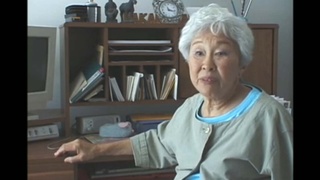Interviews
Help from fellow Japanese (Spanish)
(Spanish) I left the house and saw in the distance an old man with a stick larger than a cane, walking slowly and I said, “This guy looks like my dad.” I approached him slowly and saw that it was indeed my father! When I recognized him I said: “Papá, what are you doing here?” He was sick, real sick. He said: “Venancio, please bring me some water to drink.” I ran to the house but said nothing to my mother. I filled up a glass with water and then ran to give it to him. He drank the water, and then I accompanied him to the house.
He arrived at the house, [and] immediately I [began to write]…at that time I knew how to write in nihongo (Japanese). I wrote in nihongo to Mr. Tsukeo Isayama, who was the head of the Japanese community in San Nicolás. This letter left my hands and passed into the hands of every family in San Nicolás, each of which commented on what I had written. I was nine years old at the time.
On the third day, two empty trucks arrived [without goods inside], and those [folks] inside [were] dressed in black because they thought my father had died. One of them wore a tie, Isayama ojisan with a tie. “Is he alive?” “Yes, but in critical condition,” I told him. “Ah, yokatta ne?” “Great news, no?” he asked. Then we were going to see what to do next. We began to carry the things [from the trucks], first the things and then they placed him on a mattress, a sheet, placing his body on it, they covered him up very nicely, and afterwards the things behind him, and on the other truck the things that remained in the house.
A whole bunch of stuff remained inside the house, and then we left Llamachupán. We arrived at San Nicolás; everything had been arranged. The Japanese were very much united, they came to see Shinki, we are going to unload the trucks and place his things in this house. They gave us a small house on the San Nicolás Hacienda, we were so comfortable in that house, and there my father lived only for a while…
Date: September 6, 2007
Location: Lima, Peru
Interviewer: Harumi Nako
Contributed by: Asociación Peruano Japonesa (APJ)







